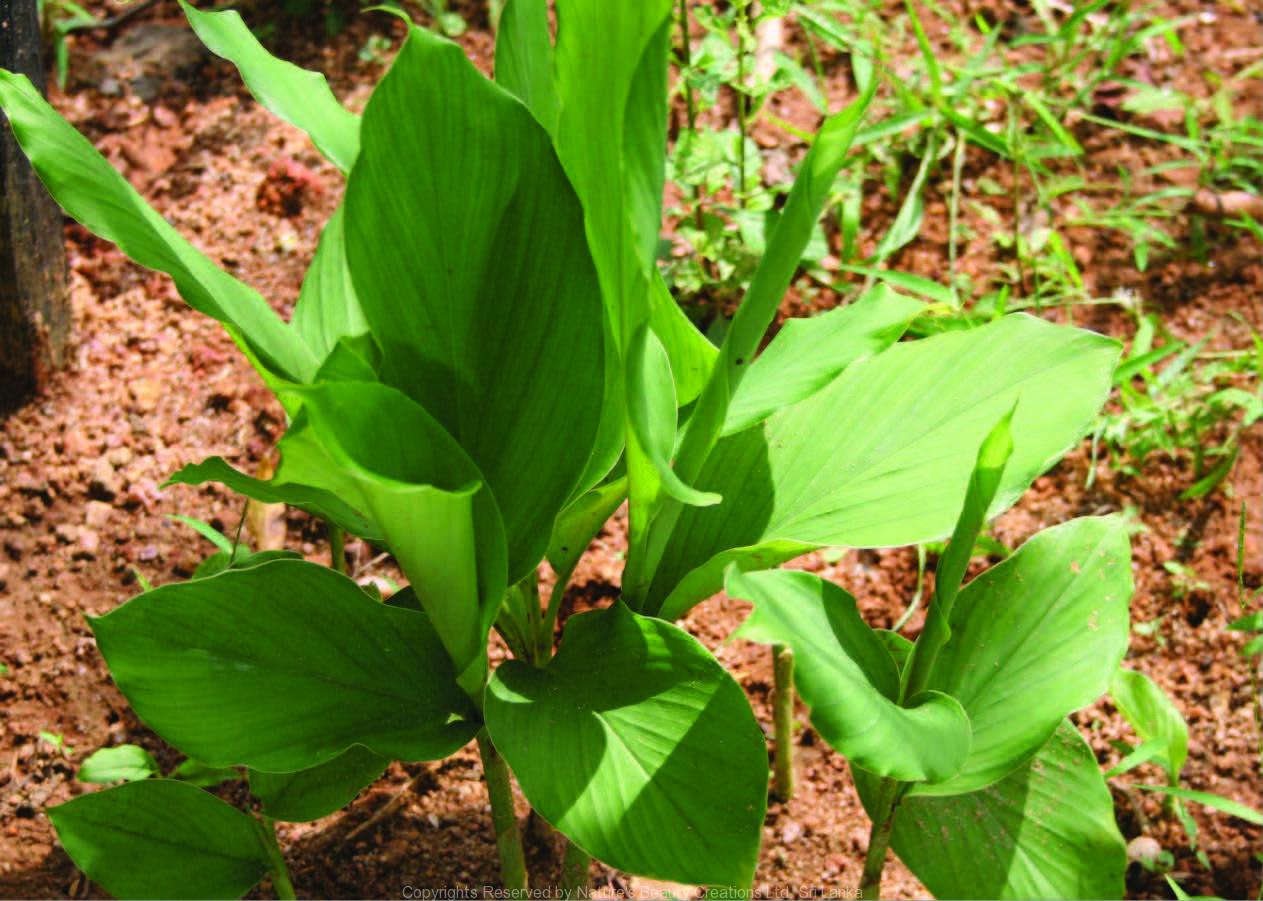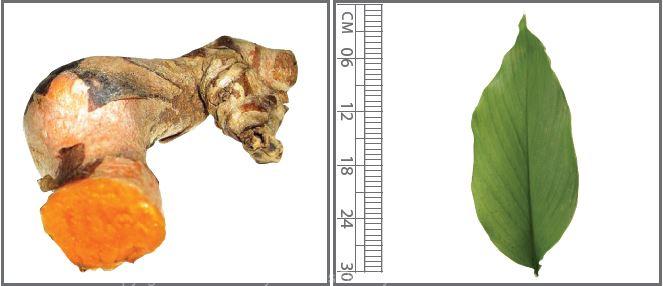

Traditional Knowledge
Useful plant parts :
Rhizome
Uses in traditional medicine :
- Thick decoction of the rhizome is a good antiseptic and used to wash eczema before applying medicine
- Applied externally on bruises, sprains and wounds
- Taken Internally as an anthelmintic
- Relieves colds in the head and catarrh
Scientific Research
Chemical constituents:
Curcuminoids: curcumin, demethoxycurcumin, bisdemethoxycurcumin, turmerone from rhizome
Bioactivity :
Turmeric oil and curcumin: antifungal; turmerone: inhibits platelet aggregation; alcoholic extract of rhizomes: antidepressant, hypotensive and bradycardic effects; aqueous extract of rhizome: hepatoprotective in hepatits B virus infection, reversible antifertility effects in males, prevents UVB induced skin ageing; curcumin and its derivatives: prevention of vascular dysfunction, cytotoxic, antioxidative, anti-inflammatory, anticancer
Clinical:
Curcumin: demonstrated anti-inflammatory activity and induces contraction of the human gallbladder
Note :
Rhizome powder is used to prepare foods
References : Aplsarlyakul A. et al., (1995), Antifungal activity of turmeric oil extracted from Curcuma longa (Zingiberaceae), Journal of Ethnopharmacology, 49, 163-169. Adaramoye, O. A. et al., (2009), Hypotensive and endothelium- independent vasorelaxant effects of methanolic extract from Curcuma longa L. in rats, Journal of Ethnopharmacology, 124, 457-462. Balaji, S. and Chempakam, B., (2010), Toxicity prediction of compounds from turmeric (Curcuma longa L), Food and Chemical Toxicology, 48, 2951-2959. Chainani-Wu, N., (2003), Safety and Anti-Inflammatory Activity of Curcumin: A Component of Tumeric (Curcuma longa), The Journal of Alternative and Complementary Medicine, 9(1), 161-168. Jayaprakasha, G. K. et al., (2005), Chemistry and biological activities of C. longa, Trends in Food Science & Technology, 16, 533-548. Kim, H. J. et al., (2009), Antiviral effect of Curcuma longa Linn extract against hepatitis B virus replication, Journal of Ethnopharmacology, 124, 189-196. Kunnumakkara, A. B. et al., (2008), Curcumin inhibits proliferation, invasion, angiogenesis and metastasis of different cancers through interaction with multiple cell signaling proteins, Cancer Letters, 269, 199-225. Lee, H. S., (2006), Antiplatelet property of Curcuma longa L. rhizome- derived ar-turmerone, Bioresource Technology, 97, 1372-1376. Mishra, R. K. and Singh, S. K., (2009), Reversible antifertility effect of aqueous rhizome extract of Curcuma longa L. in male laboratory mice, Contraception, 79, 479-487. Mukherje, P. K. et al., (2011), Bioactive compounds from natural resources against skin aging, Phytomedicine, 19, 64-73. Paramasivam, M. et al., (2009), High-performance thin layer chromato- graphic method for quantitative determination of curcuminoids in Curcuma longa germplasm, Food Chemistry, 113, 640-644. Rarnsewak, R. S. et al., (2000), Cytotoxicity, antioxidant and anti-inflammatory activities of Curcumins I-III from Curcuma longa, Phytomedicine, 7(4), 303-308. Rasyid and Lelo, (1999), The effect of curcumin and placebo on human gall-bladder function: an ultrasound study, Alimentary Pharmacology & Therapeutics, 13(2), 245-249. Sompamit, K. et al., (2009), Curcumin improves vascular function and alleviates oxidative stress in non-lethal lipopolysaccharide-induced endotoxaemia in mice, European Journal of Pharmacology, 616,192- 199. Srivastava, K. C. et al., (1995), Curcumin, a Major Component of Food Spice Turmeric (Curcuma longa) Inhibits Aggregation and Alters Eicosanoid Metabolism in Human Blood Platelets, Prostaglandins Leukolrienes and Essential Fatty Acids, Food and Chemical Toxicology, 52, 223-227. Sumiyoshi, M. and Kimura, Y., (2009), Effects of a turmeric extract (Curcuma longa) on chronic ultraviolet B irradiation-induced skin damage in melanin-possessing hairless mice, Phytomedicine, 16(12), 1137-1143. Xia, X. et al., (2007), Behavioral, neurochemical and neuroendocrine effects of the ethanolic extract from Curcuma longa L. in the mouse forced swimming test, Journal of Ethnopharmacology, 110, 356-363.
Copyrights Reserved By
Natures Beauty Creations



